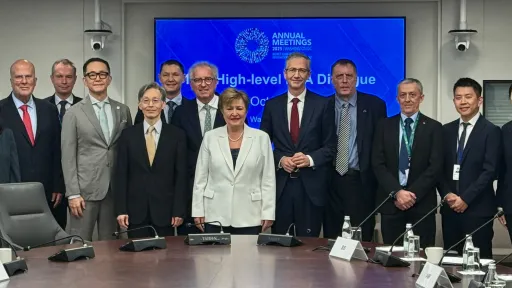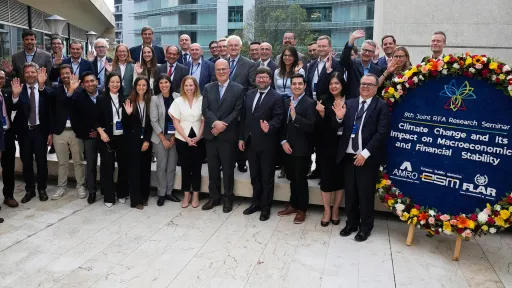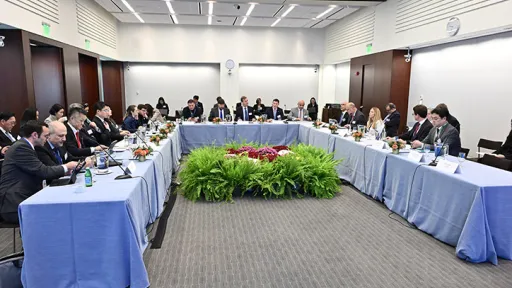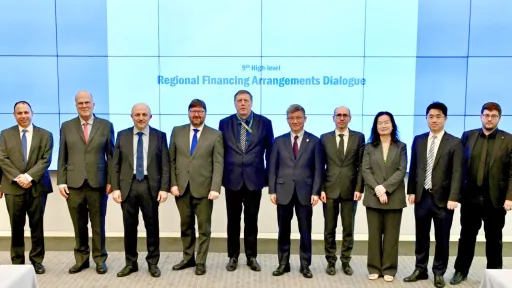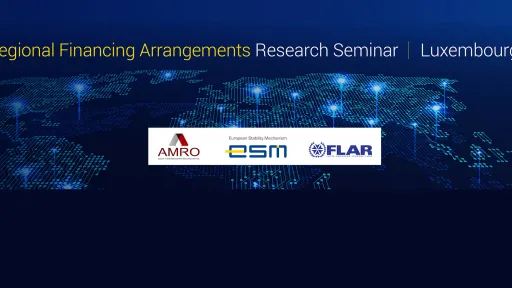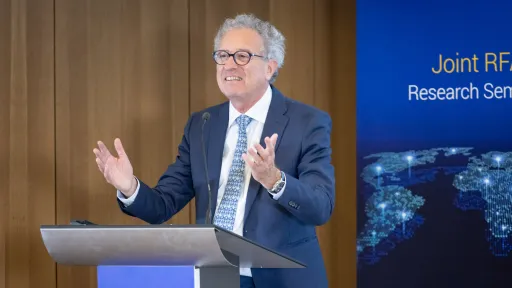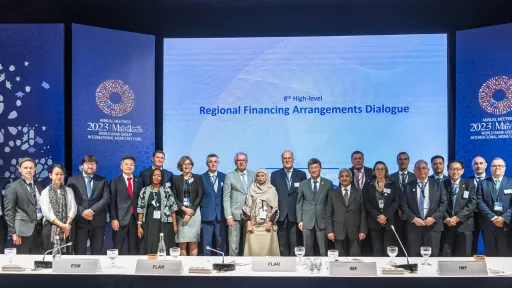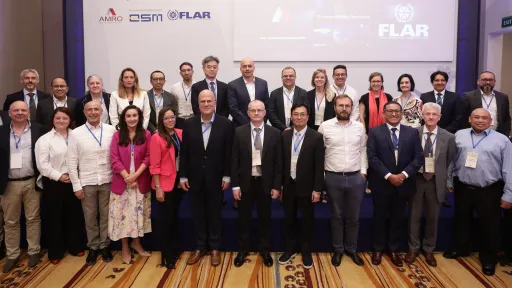Regional Financing Arrangements
What are the Regional Financing Arrangements and what is their role in the Global Financial Safety Net?
RFAs are one of the layers of the Global Financial Safety Net (GFSN).
The GFSN is a multilayered system of resources and financial frameworks that helps countries prepare for, prevent, and respond to financial crises. Its purpose is to provide liquidity buffers and restore market confidence to help economies safeguard stability when a shock hits. The GFSN consists of several layers: countries’ own foreign exchange reserves; bilateral swap lines between central banks; the International Monetary Fund (IMF) as the global lender of last resort; and Regional Financing Arrangements (RFAs), which provide crisis support at the regional level.
The European Stability Mechanism (ESM) is the euro area’s RFA and thus a key pillar of the GFSN. By working closely with the IMF and peer RFAs, the ESM contributes to strengthening cooperation across the system, with the goal of ensuring that crisis responses are more effective and that financial stability is preserved both within Europe and globally.
The global financial safety net (GFSN)
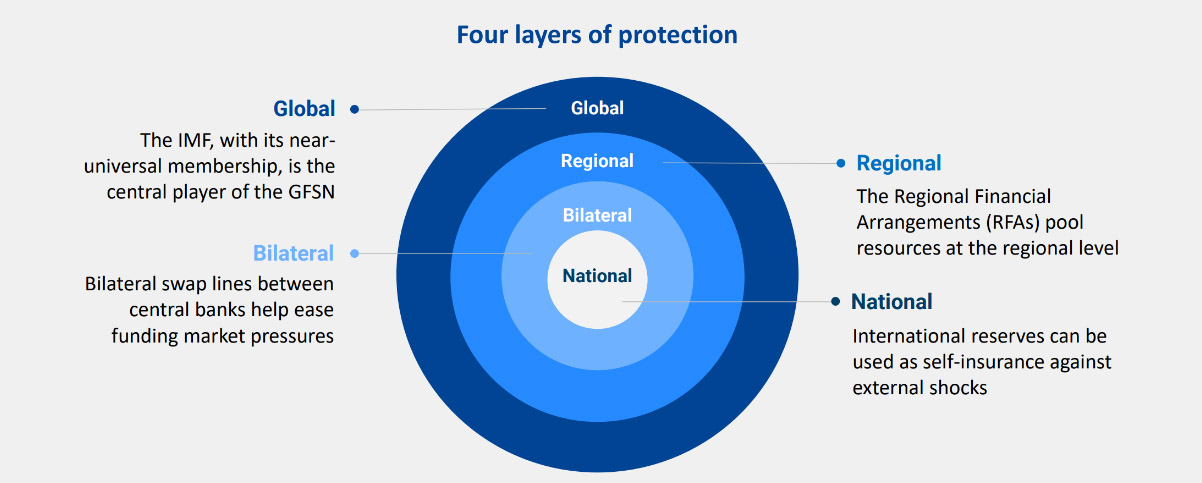
What is the RFA network and how do RFAs cooperate
The RFA Network
The Regional Financing Arrangement (RFA) network brings together regional financial safety mechanisms and the IMF.
Each RFA is unique, with tools and governance frameworks tailored to regional contexts. At the same time, RFAs share the goal of preventing and resolving financial crises. The network provides a platform for multilateral dialogue, peer learning, and joint action where appropriate, complementing the IMF’s role at the centre of the GFSN.
The RFA network currently includes:
- Arab Monetary Fund (AMF) – Middle East and North Africa
- BRICS Contingent Reserve Arrangement (CRA) – BRICS countries (Brazil, Russia, India, China, South Africa)
- Chiang Mai Initiative Multilateralisation (CMIM) and ASEAN+3 Macroeconomic Research Office (AMRO) – East and Southeast Asia
- EU Balance of Payments (BoP) assistance and Macro-Financial Assistance (MFA) – EU Member States outside of the euro area and neighbouring partner countries respectively
- Eurasian Fund for Stabilization and Development (EFSD) – Eurasia
- Latin American Reserve Fund (FLAR) – Latin America
Regional financing arrangements: country coverage
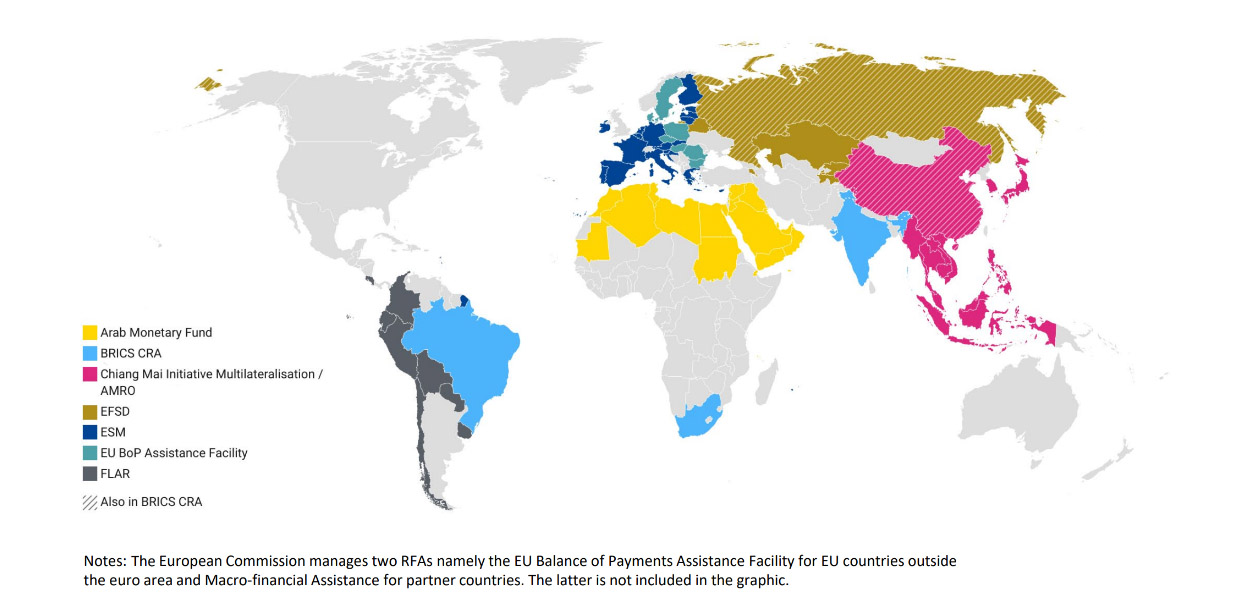
RFA Collaboration
Closer collaboration amongst RFAs began in 2016 with the launch of the first High-level RFA Dialogue. Since then, the network has become a regular forum to share crisis experiences and build trust between regional and global safety nets.
The core activities of the RFA network include:
- Annual High-Level RFA Dialogue for the heads of RFAs with the IMF
- Annual Joint RFA Research Seminar
- Joint publications, workshops and technical experts’ interactions
- Regular dialogue on policy work with the G20 International Financial Architecture (IFA) Working Group
Together, these initiatives strengthen cooperation, share crisis response knowledge, and enhance the resilience of the Global Financial Safety Net.
The ESM plays an active role in these initiatives as the euro area’s financial crisis fire fighter. Being part of the RFA network allows us to bring our expertise in crisis management to the global stage, while ensuring that the euro area’s perspective is represented in international discussions. This engagement enhances the ESM’s credibility as a trusted partner, strengthens its cooperation with peer institutions, and reinforces its mandate to safeguard financial stability in the euro area.
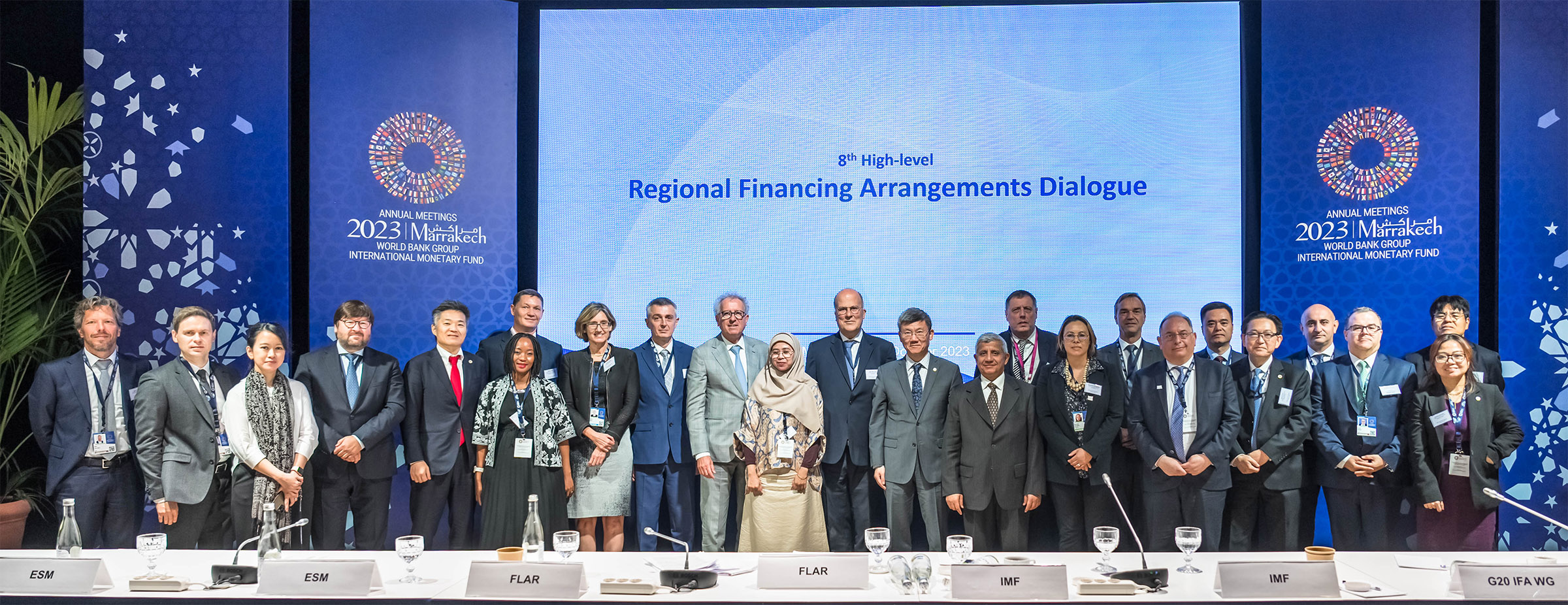
Looking ahead
The growing complexity of global economic and financial challenges calls for greater synergy among GFSN layers. RFAs like the ESM are well-positioned to contribute to financial stability in times of stress.
The ESM is committed to strengthening its role within the GFSN and fostering close partnerships with RFAs to promote a more resilient international financial system.
Explore more
RFA staff Publications
Geoeconomic fragmentation: Implications for the euro area and ASEAN+3 regions
Finding complementarities in IMF and RFA toolkits
IMF–RFA collaboration: motives, state of play, and way forward
Japan’s sovereign rating in the post-pandemic era
